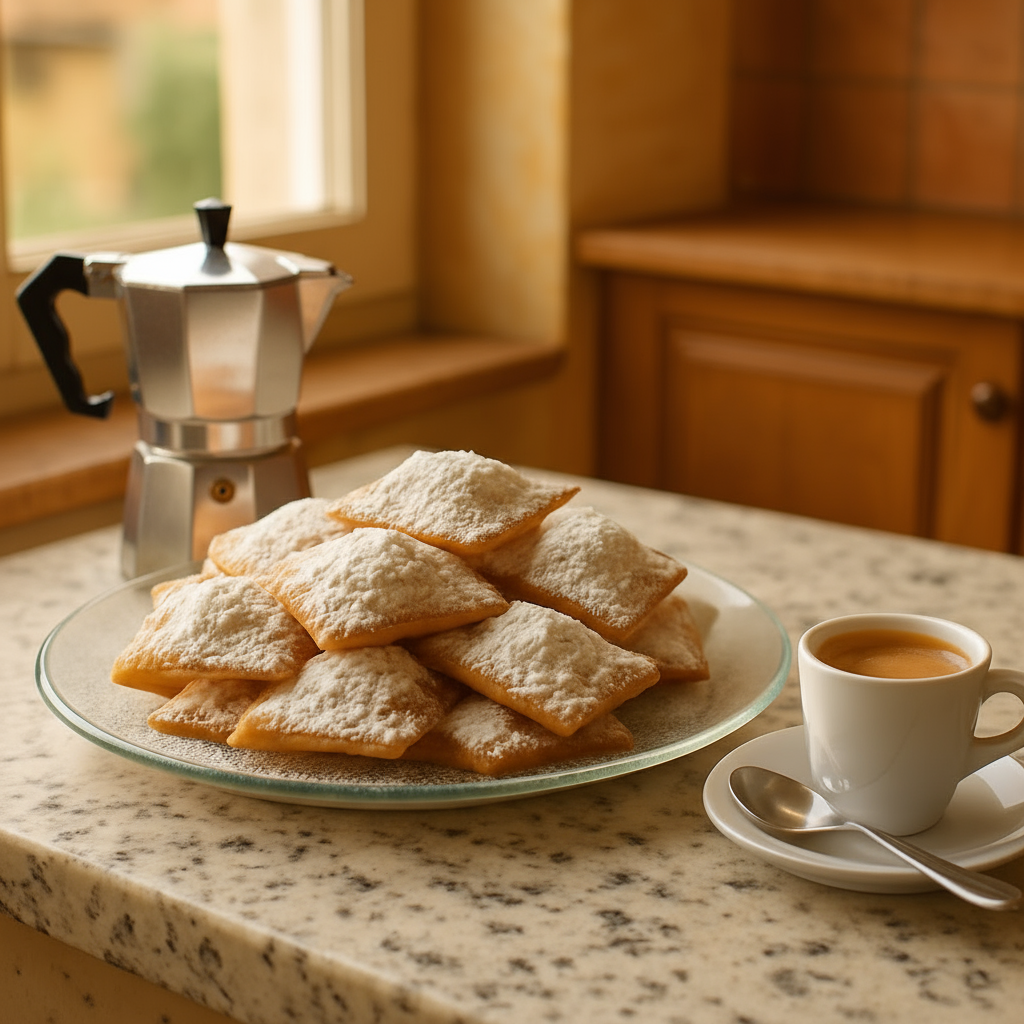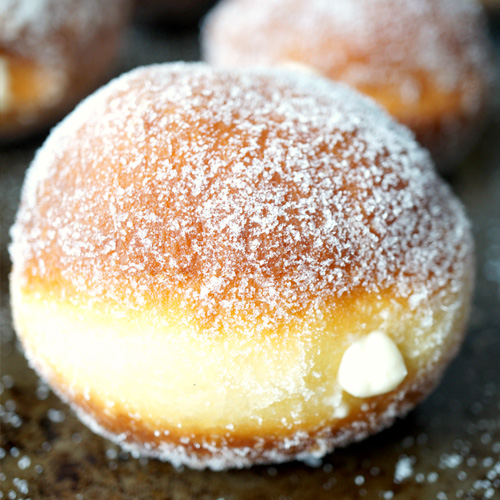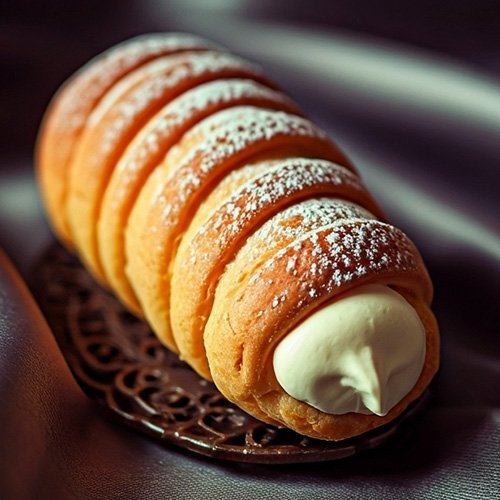Ravioli Dolce: Italy’s Sweet Secret in a Pasta Pocket
At first bite, ravioli dolce might surprise you—sugary filling wrapped in what looks like pasta? But this centuries-old Italian treat has long blurred the line between savory and sweet, tradition and invention. These sweet raviolis aren’t your average dinner fare. They were born in festive kitchens, places buzzing with life during Carnival, Christmas, weddings, or a good old-fashioned family reunion. You’ll find them in frying pans and ovens across Italy, dusted in powdered sugar like winter’s first snow.
Each region gave ravioli dolce its own twist. In some, the filling is made of chestnuts and cocoa; in others, ricotta, lemon zest, or honeyed nuts. These were often made from what was on hand, leftover fruit from the harvest, bits of chocolate, or sweetened cheeses. That made them both practical and a little indulgent.
During Carnevale, when Italy turns into a wonderland of masks and fried sweets, ravioli dolce takes center stage. Their crisp golden shells and soft, warm centers are the kind of comfort food that goes beyond nostalgia—it’s a celebration you can eat.
And like all good traditions, ravioli dolce has evolved. Modern cooks fill them with Nutella, mascarpone, jam, or even gelato, playing with texture and taste while keeping the soul of the dish intact.
Whether fried or baked, rustic or refined, ravioli dolce is more than dessert. It’s a time capsule, a regional handshake, and a reminder that in Italy, even pasta knows how to party
Difference between Sicilian Cassatelle and Ravioli Dolce
At first glance, Sicilian cassatelle and ravioli dolce might seem like long-lost relatives both sweet-filled pockets, dusted with sugar, made for celebration. But bite into each, and the difference is clear. Cassatelle are pure Sicilian comfort: flaky, wine-kissed pastry wrapped around creamy ricotta or spiced chickpeas, fried to a golden crisp. They’re the kind of treat Nonna might make for Easter, her kitchen filled with the scent of sugar and citrus. Ravioli dolce, meanwhile, feel more rustic, more improvised born from the pasta dough of everyday meals, filled with whatever the harvest left behind: chestnuts, jam, ricotta, or nuts. They show up at Carnival, at Christmas, at weddings, wherever there’s a reason to gather and share. One dessert whispers of Sicily’s sun-soaked traditions, the other of Northern kitchens making magic out of leftovers. Different roots, same joy.
Key Differences: Same Shape, Different Story: (Sweet Ravioli)
| Feature | Sicilian Cassatelle | Ravioli Dolce |
|---|---|---|
| Region | Sicily | Mainland Italy (varied) |
| Dough | Pastry-like, wine/lard dough | Egg pasta dough |
| Filling | Sweet ricotta, chickpeas | Ricotta, nuts, jam, chocolate |
| Cooking | Fried | Fried or baked |
| Occasions | Carnival, Easter | Carnival, Christmas, weddings |
| Texture | Crisp, flaky | Firm, al dente or crunchy |
Variations
One of the joys of Ravioli Dolci is their versatility in every region in Italy (and many home kitchens) has its own spin on this festive treat. Here are some delicious variations to try:
Chocolate Lovers
Chocolate Ricotta Filling: Add 1–2 tablespoons of cocoa powder and mini chocolate chips to the ricotta mixture for a rich, chocolaty twist.
Nutella Ravioli: Use a spoonful of Nutella as the filling for a quick, kid-friendly version.
Nut-Based Fillings
Chestnut & Honey: Popular in Tuscany, this filling combines boiled chestnuts, honey, and a touch of rum or orange zest.
Almond or Hazelnut Paste: Sweet ground nuts mixed with sugar and a little milk or citrus zest make a fragrant, Sicilian-style filling.
Citrus & Spice
Add a splash of orange blossom water or lemon extract to the ricotta filling for extra aroma.
Mix in spices like cinnamon, nutmeg, or clove for a warm, festive flavor — especially around the holidays.
Once your Ravioli Dolci are perfectly golden and crisp, let them cool slightly — just enough so they’re warm but not too hot to handle. Then, dust generously with powdered sugar for that signature sweet finish. These delightful treats are best enjoyed warm, when the filling is soft and aromatic, but they’re just as delicious served at room temperature, making them ideal for holiday platters, dessert tables, or afternoon coffee breaks.
Serving Suggestions
Ravioli Dolci are a versatile dessert that pair beautifully with a variety of drinks and accompaniments. Here are some classic and creative ways to serve them:
Espresso or Cappuccino: A small cup of strong Italian coffee is the perfect companion. The bitterness of espresso balances the sweet, creamy filling of the ravioli.
Vin Santo: This traditional Tuscan dessert wine offers rich, nutty notes that pair wonderfully with the citrus and ricotta in the filling. Dip the ravioli in the wine for an indulgent treat.
Fresh Berries or Citrus Segments: Serve with a side of fresh raspberries, strawberries, or orange slices to add brightness and a refreshing contrast.
Whipped Cream or Mascarpone: A small dollop of lightly sweetened whipped cream or mascarpone cheese makes for an elegant plating touch.
Drizzle of Honey or Chocolate: For extra richness, try a light drizzle of honey or melted dark chocolate over the ravioli before serving.
Storage
Ravioli Dolci are best enjoyed fresh, especially when fried, as they tend to lose their crispness over time. However, you can still store them safely:
Room Temperature: Store cooled ravioli in an airtight container for up to 2 days. Keep them in a single layer or use parchment paper between layers to prevent sticking.
Reheating: To restore a bit of crispness, reheat briefly in a low oven (300°F / 150°C for 5–7 minutes). Avoid microwaving, as it softens the texture.
Freezing (Uncooked Only): Assemble the ravioli, then place in a single layer on a baking sheet and freeze until solid. Transfer to a freezer-safe bag or container. Fry or bake straight from frozen — just add 1–2 extra minutes to the cooking time.













